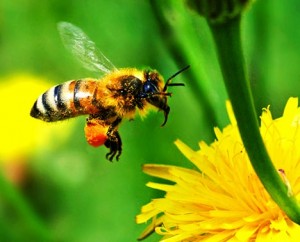Beginners Guide on Bee-Keeping - What to Start with?
The large-scale industry of honey production widespread all over the world wouldn’t exist without amateur bee-keeping that used to be popular throughout centuries. Still, bee-keeping amateurs having their private apiaries do exist and even prosper nowadays.
I am a student going bee-keeping as my hobby. When I feel the need to rest, I find a pro writer online, say “please just do my homework quickly”, and go to my apiary in the backyard. You just need to try it to understand how great bee-keeping is.
Gain First Knowledge on Bee-Keeping
I can recommend the following guide for anyone not familiar with bee-keeping at all (just like I was).
The best time to start exploring the topic is winter. Read some topical literature, both books, and magazines explaining bees’ lives and families, in short. This will be the very basis.
Then, proceed with the special literature for bee-keepers revealing particular secrets and basic skills of keeping bees. The modern Internet makes it much easier and more comfortable for keepers to study the topic: online lessons, videos and specialized courses do exist already.
After the study is complete and you have some theory in your head, you can be brave enough to get some practice on a real apiary. The best way is, of course, to become an intern of an experienced bee-keeper at the beginning of the following season in summer (or even in spring). That is how you gain practical skills and first experience.
While looking for internship opportunities, you should choose one of the profitable apiaries in your neighborhood that applies the best methods of rational, up-to-date keeping. You should also start keeping the professional bee-keeping calendar.
After you had the first apiary practice experience gained from spring to autumn, spend the next winter reading the topical literature again. Even if you had read it previously, the information contained in the books, magazines and videos will be clearer and more understandable to you because of new practical knowledge.
How to Choose a Location for an Apiary?
The backyard availability makes it much easier for suburban area inhabitants to place their apiary. People living in urban zones will need to purchase that land, or rent it from someone they know.
The correct place for an apiary is the best care of your bees. What are the requirements and advantages a place might have to keep an apiary site? Let’s see:
- Flower fields and wild lands are your friends here: the closer the apiary stands to them, the more nectar and pollen your bees will bring to their hives;
- Bees are not afraid of cold, they are afraid of wind, especially from the north and north-east;
- Choose the plain land for an apiary, or that with a small slope to let precipitations flow out;
- Humidity is the greatest enemy of any apiary;
- A river or lake nearby? That’s not an advantage but sure loss of many bees in those water bodies;
- An apiary requires regular control, which means you should live nearby;
- Exclude placing an apiary close to other ones when possible.
How to Place Hives
For the apiary lands big enough, it is recommended to place hives in cells previously divided into squares and placed in rows or chess-wise. The best distance between cells is about 12 to 15 feet. When placing hives that way, you also should provide bees with “milestones” and paint different hives in different colors to prevent bee wandering.

